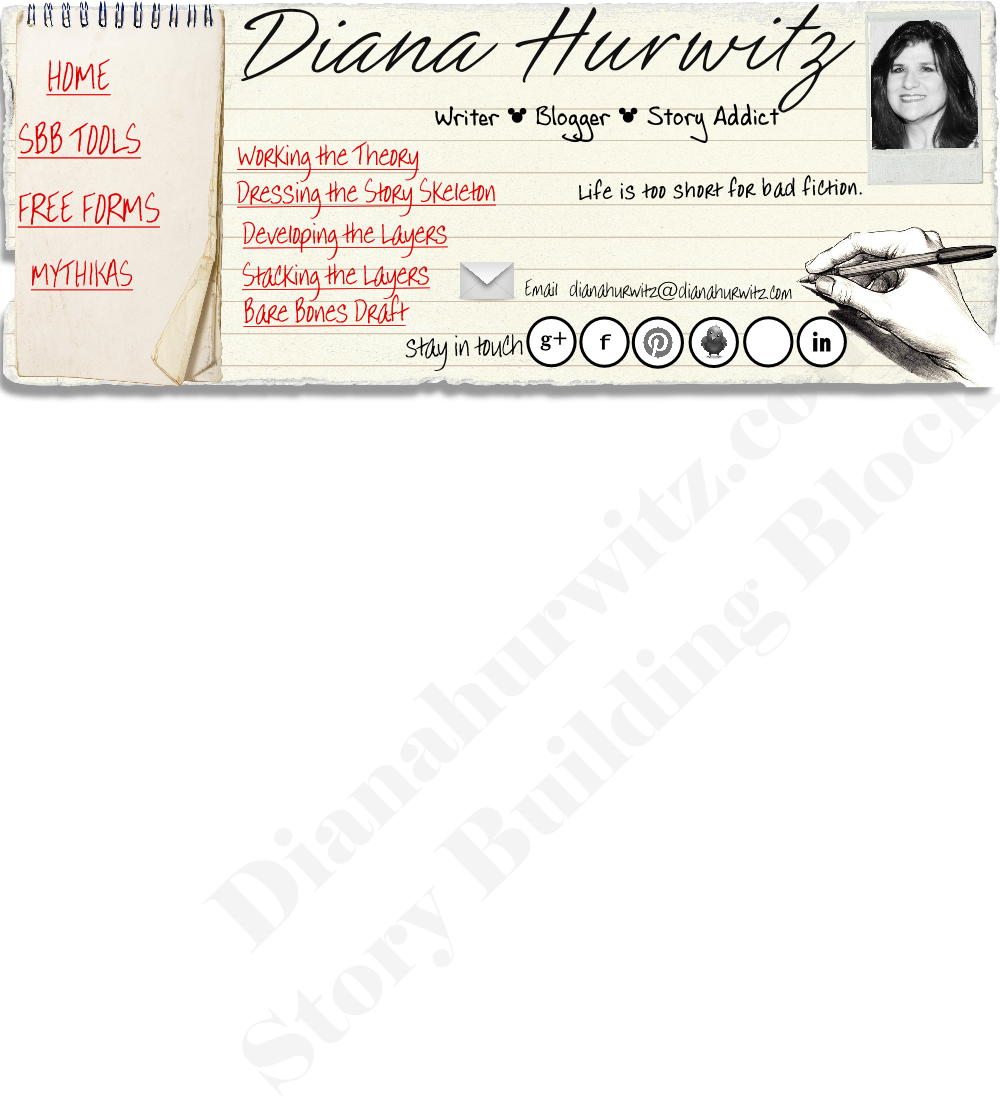


©2018 www.dianahurwitz.com all rights reserved •Designed by Diana Hurwitz

We began with the premise for a story involving a meteor streaking toward earth, a conflicted scientist, his crumbling marriage, and a coworker who makes his life miserable. We decided to make the story about Dick, love interest Sally, bossy Jane, jealous Ted, and the meteor streaking toward earth. We have selected the Disaster Thriller format and created at least ten ideas for each layer of conflict. The next step is to decide which order works best for each scene.
We have come up with ten basic ideas for all four layers of conflict. You may find you need to add more scenes to fill in the gaps in the story. You may change your mind about elements of the plot. The point is to have a series of prompts that keeps you working through your rough draft. You can tweak and enrich the draft during the revision layers. Things will come to you as you write that you didn’t think of before. Your characters will come alive and may change the trajectory of your story. That’s expected. What’s important is to avoid getting stuck in the muddy middle.
Let’s layer the forty scene ideas we've developed in the most logical order.
INCITING EVENT
Internal Conflict 1: Dick and Sally make plans to go on a long-awaited vacation. He gets a call.
External Conflict 1: Dick learns a meteor will strike.
Antagonist Conflict 1: Ted learns there is a meteor headed toward earth. Finally, the world can be destroyed and he doesn’t have to lift a finger. All he has to do is sit back and watch the show.
Interpersonal Conflict 1: Jane meets with Ted to declare her feelings before it is too late. He manipulates her into helping him without telling her the real reason.
Internal Conflict 2: Dick informs Sally that he isn’t retiring after all. He can’t tell her why.
Antagonist Conflict 2: Dick has come up with a plan. Ted vows to make sure it doesn’t work.
Interpersonal Conflict 2: Jane meets with Dick and gives him erroneous data.
External Conflict 2: Dick thinks of a way to stop the meteor while it is still far away. He will nudge it with a satellite.
Interpersonal Conflict 3: General Smith argues that his satellite is too important to be used to adjust the meteor’s trajectory. It could cause more harm than good. They should blow it up.
Internal Conflict 3: Dick and Sally fight about the vacation. Looks like we have to cancel it.
Antagonist Conflict 3: Ted is denied access to the equipment. He has something on one of the ground crew, Bob, and uses that pressure to convince him to tamper with it. Bob objects, "But we’ll all die.” Ted threatens, "Do you want to die now or later?"
Interpersonal Conflict 4: Bob tries to tinker with the satellite, but almost gets caught by Jane.
Antagonist Conflict 4: Ted confronts Dick. "Why are you trying to stop the inevitable?"
Interpersonal Conflict 5: General Smith relents and allows the satellite to be used.
External Conflict 3: The satellite crashes into the meteor, but doesn’t change the trajectory.
TURNING POINT ONE
Internal Conflict 4: Sally gives Dick an ultimatum: "I’m tired of waiting. It’s me or the job." Dick replies, "If I don’t do this there won’t be any me or you." Sally asks, “What do you mean?” To which Dick replies, “I can’t tell you.”
External Conflict 4: Dick comes up with plan to divert the meteor with a laser beam.
Antagonist Conflict 5: Dick has come up with a new plan. So Ted must get Bob to tamper with the laser beam.
External Conflict 5: They can’t get the beam close enough from the ground.
Antagonist Conflict 6: Ted calls Sally and tells her Dick and Jane are having an affair.
Internal Conflict 5: Sally accuses Dick of having an affair with Jane at work. Dick is called away.
Interpersonal Conflict 6: Captain Curtis balks at sending the laser to the space station.
External Conflict 6: They send the laser to the space station. The equipment breaks off and is lost in space.
TURNING POINT TWO
Internal Conflict 6: Dick finds Sally packing her bags. Dick says, "Don’t leave. I love you. I’ve always loved you."
She replies, "Then why are you ruining things?" Should he tell? Is it better for her to know or not know that their days are numbered?
Antagonist Conflict 7: Dick confronts Ted. "You had something to do with this." Ted replies, "You’ll never prove it and in a few days it won’t matter anyway."
External Conflict 7: They are back to the drawing board - all seems lost. They enter countdown mode.
Internal Conflict 7: Sally tells Dick that she received a call from Ted and that he said there was no reason for Dick to stay at work. That he is lying to her.
External Conflict 8: Dick comes up with a final plan. It is do or die. They will nuke the meteor.
Antagonist Conflict 8: Ted must find a way to make certain the shuttle doesn’t take off.
Interpersonal Conflict 7: Captain Curtis appeals to his crew. Is anyone willing to go? Captain Curtis decides to go
himself.
Internal Conflict 8: Dick tells Sally the truth.
CLIMAX
External Conflict 9: They rev up the shuttle loaded with a lethal payload to intercept the meteor and, despite last minute glitches, the shuttle takes off on a suicide mission.
Antagonist Conflict 9: Ted’s attempts to prevent take off fail.
Interpersonal Conflict 8: Ted and Jane have a show down. Jane can’t believe Ted is so evil.
Internal Conflict 9: Dick and Sally spend the evening together knowing it may be their last.
Interpersonal Conflict 9: Bob rats on Ted.
Interpersonal Conflict 10: Jane and Bob celebrate when the shuttle succeeds.
Antagonist Conflict 10: Ted is led off in handcuffs.
RESOLUTION
External Conflict 10: Their plan succeeds and everyone lives, except the crew of the shuttle.
Interpersonal Conflict 11: General Smith tells Dick to stay. He is too valuable an asset to retire.
Internal Conflict 10: Dick and Sally leave for the airport to go on their vacation.
THE END
Now that we have a basic outline of the plot progression, we can begin our first draft. If massive changes are made along the way, it doesn’t hurt to repeat this exercise at the end. Make a list of each scene and the conflict it addresses. Does it still flow in a logical cause and effect order? For more information on how to flesh out your conflict outline, pick up a copy of Story Building Blocks II: Crafting Believable Conflict.
To get started, it is time for a Bare Bones Draft. Tackle each scene with whatever comes first: dialogue, moving around the set, a little description. Leave markers for questions you have that need to be researched. Once you have the framework, go back and fill in description, tighten dialogue, and make sure you have all of the elements you need to make the story come alive.